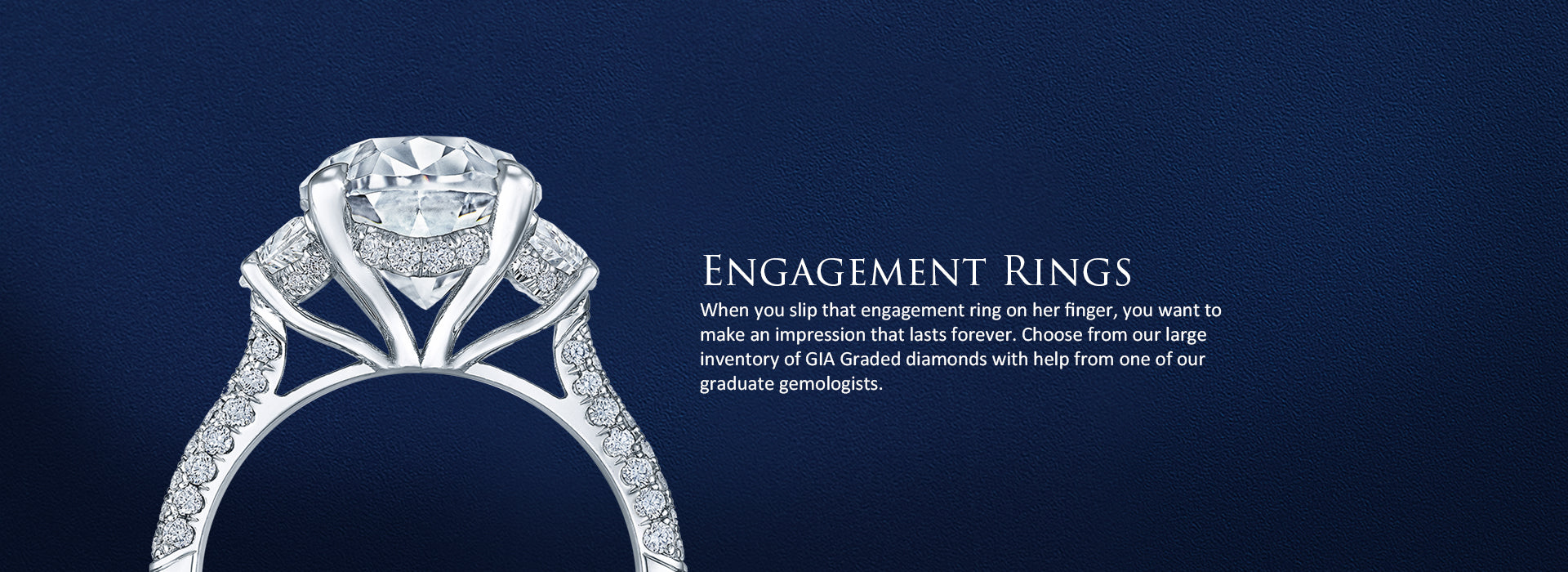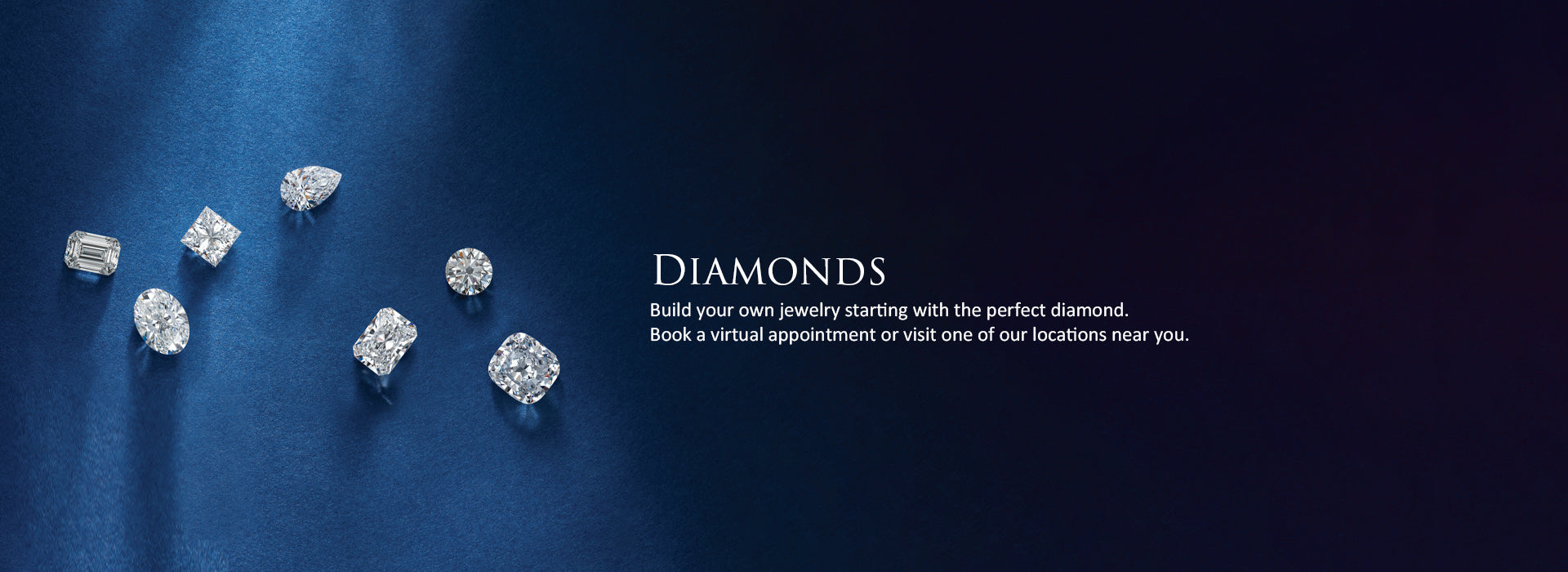GIA Certified Diamonds
At Bella Cosa Jewelers, we are proud to offer an exceptional collection of round, oval, and other fancy-shaped diamonds. We travel the globe to source the finest stones, starting with those graded by the Gemological Institute of America (GIA). Each diamond is then carefully examined to ensure it meets our uncompromising standards.
When you choose a diamond from Bella Cosa Jewelers, you’re receiving the best quality at the best price. Our Graduate Gemologists and GIA-trained associates are here to guide you through the unique qualities of each diamond and help you find the perfect setting to showcase your choice.
Scroll down to learn more about the 4 Cs—Carat, Clarity, Color, and Cut—and discover why Every Facet Matters® when selecting your perfect diamond.
Carat
Carat is a diamond's measure of weight, not size. One full carat is equal to 100 points. A 3/4 carat diamond is the same as 75 points. Since larger diamonds are found less frequently in nature, a 1 carat diamond will cost more than twice a 1/2 carat diamond (assuming all other characteristics remain constant). The cut and the mounting can make a diamond appear larger than its actual weight. We can help you find the right balance between size, clarity, and color. The value of a diamond is determined by its rarity. Larger diamonds are not uncovered in the mining process as often as smaller diamonds. Thus larger stones are more precious and rare.
Clarity
Diamonds are a natural substance, and no two diamonds are exactly alike. Nature signs each of its creations with telltale inclusions, or internal flaws. A diamond with more inclusions will be less rare, so it will be less expensive. But this does not necessarily mean it will be less beautiful to the naked eye. Nature ensures that each diamond is as individual as the person who wears it. Naturally occurring inclusions such as minerals or fractures are identifying characteristics created while diamonds are formed in the earth. Inclusions are measured on a scale of perfection, known as clarity, which was established by GIA. The greater a diamond's clarity, the more rare and valuable it is.
A diamond with a large inclusion will impact the reflection of light, making the diamond less brilliant. Diamonds are graded with 10X magnification. Completely flawless or internally flawless diamonds are very rare. Most diamonds have tiny flaws or inclusions, known as nature’s fingerprints, which occurred when the diamond crystal was formed millions of years ago. When inclusions do not materially interfere with the passage of light through the diamond, they don’t affect its beauty. Without magnification, it is very difficult to see the difference between diamonds graded Flawless to Slightly Included, FL to SI. Most of the time inclusions are only visible to the unaided eye when the diamond's clarity reaches the Imperfect grades, I1 to I3. Clarity grades are based on the size, nature, relief, and location of the inclusions.
Color
The color of diamonds varies from colorless (highest quality) to many shades of yellow (less rare). The more colorless a diamond is, the rarer and more valuable it becomes as it appears whiter and brighter to the eye. Most diamonds have a slight trace of yellow, brown or gray body color. Color Grades are determined by using the letters of the alphabet. As the diamond reflects traces of yellow, the grading is reduced through the alphabet. The most respected system used today for evaluating diamond color was developed by the Gemological Institute of America, (GIA). Diamonds are graded on a color scale implemented by the GIA, which ranges from D to Z.
Diamonds are found in all colors, but most diamonds we sell range in color from D to I. Colorless diamonds are graded D to F. Diamonds graded G to J are in the near-colorless range. The difference of one color grade is very hard to see when the diamond is set. Diamonds are graded loose, under ideal lighting conditions and are compared to a master set for accuracy. Many of these color distinctions are so subtle as to be invisible to the untrained eye. But these slight differences make a very big difference in diamond quality and price.
Cut
The cut quality of a diamond fuels its fire, sparkle, and brilliance. Among the four Cs, cut is the most influential factor in determining a diamond’s beauty and allure, which is why we believe Every Facet Matters®.
The GIA Diamond Cut Grading System for round brilliant diamonds in the D-to-Z color range evaluates seven essential aspects. The first three—brightness (light reflection), fire (light dispersion into spectral colors), and scintillation (the sparkle and light pattern)—capture a diamond’s visual appeal. The other four—weight ratio, durability, polish, and symmetry—assess its craftsmanship and design integrity.

Conflict-Free Diamonds
The Kimberley Process is a commitment to remove conflict diamonds from the global supply chain. The KP has 54 participants, representing 81 countries, with the European Union and its Member States counting as a single participant. KP members account for approximately 99.8% of the global production of rough diamonds.
Under the Kimberley Process, diamond-producing countries certify that diamonds have been mined and sold through legitimate channels. This program is designed to prevent conflict and illicit diamonds from entering the international mainstream diamond trade.
At Bella Cosa Jewelers we only purchase from suppliers that adhere to the Kimberley Process and are concerned about the ethical and social issues that surround diamonds. All mounted diamonds sold at Bella Cosa Jewelers are purchased from respected well-established companies listed in the Jewelers Board of Trade directory, who give us a written guarantee their diamonds are purchased from non-conflict regions. All loose diamonds are purchased from De Beers sightholders who guarantee in writing that their diamonds are conflict-free.

Diamond Care & Cleaning
Diamonds are one of the hardest substances known. They resist damage by heat, scratching, and chemicals. Diamonds can only be cut or polished by another diamond. Keeping this in mind, it is still possible to damage a diamond with a sharp blow. All jewelry should be treated with care.
Cleaning Your Diamonds
The staff at Bella Cosa Jewelers is happy to clean your jewelry free of charge. Cleaning will bring back the original brilliance to your diamond that you enjoyed the first day you received it. We will also check the setting to see if the diamonds are secure. If you unable to come into the store to clean your jewelry, a combination of one part ammonia to two parts water can be a fantastic cleaner for your diamond jewelry set in gold or platinum. You can gently rub the jewelry with a soft brush to help free it of stuck on dirt.
Sorting Your Diamond Jewelry
It is recommended to keep each piece of your diamond jewelry separate from each other when you store it. This will keep them from rubbing against and damaging your other fine jewelry pieces.





